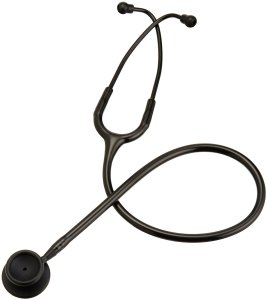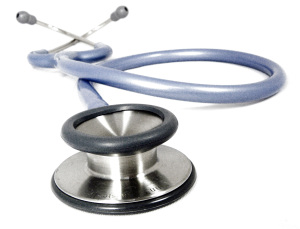Advice On How To Use A Stethoscope
 Stethoscopes are diagnostic instruments that are used by a number of medical professionals in order to listen to and monitor their patient’s pulse points, heart and the chest cavity. Health practitioners utilize these types of tools as part of an examination to listen for irregular heartbeats or congestion that can occur in the lung cavities.
Stethoscopes are diagnostic instruments that are used by a number of medical professionals in order to listen to and monitor their patient’s pulse points, heart and the chest cavity. Health practitioners utilize these types of tools as part of an examination to listen for irregular heartbeats or congestion that can occur in the lung cavities.
The modern types of stethoscopes are made up of a device with a bell-shape along with a plastic diaphragm, two plastic earpieces, a metal, hollow headset and rubber tubing. The diaphragm is positioned in direct contact on the patients back or chest. When the patient takes breathe, the sounds that come from the area of the patient’s chest cavity are then amplified through the bell and diaphragm.
The sounds that travel along the rubber, hollow tube and into the headset, reach the doctor’s ears through the ear pieces. Abnormal sounds, like constricted airways or fluid retention are very easily detected. Heartbeats are also heard through a stethoscope, however, the diaphragm used for heart exams are generally different compared to respiratory exam. The adjustments used filter out any unwanted sounds, to concentrate on specific areas of concern.
The Correct Way To Use A Stethoscope
The acoustic stethoscope which is the most common device is designed to capture the vibrations from the inside of a patient’s body and then amplify these sounds into sound waves. When the stethoscope is placed onto the body, the diaphragm which is made up on a bigger flat side is in contact with the body. The other side of the diaphragm is known as the bell. When the diaphragm is pressed in a firm position against the patient’s skin, there are internal vibrations that are then transmitted through a diaphragm that create acoustic waves.
These acoustic waves travel along the tubing and reach the examiners ears. The captured waves that are transmitted are of a higher frequency. The bell on the stethoscope is used for sounds that are of a lower frequency due to its hollow shape.
 When using a stethoscope, the earpieces will need to fit correctly. Certain stethoscopes have ear tubes where the earpiece is positioned slightly forward. This position is to make sure that sounds follow the shape of an ear canal and the sounds are able to reach the eardrum readily. The stethoscope should not be used over dry hair or thick clothing. This can cause rustling noises that can cause confusion with any pathological findings.
When using a stethoscope, the earpieces will need to fit correctly. Certain stethoscopes have ear tubes where the earpiece is positioned slightly forward. This position is to make sure that sounds follow the shape of an ear canal and the sounds are able to reach the eardrum readily. The stethoscope should not be used over dry hair or thick clothing. This can cause rustling noises that can cause confusion with any pathological findings.
Most stethoscopes such as the commonly used Litmannn models consist of chest pieces that turn, in order to direct sounds towards the diaphragm or the bell. Once the earpieces have been fitted the chest piece should be tapped lightly to ensure that sounds are captured correctly. When the examiner holds the chest piece, the correct position would be to place the device between the middle and the index finger. This position avoids any extraneous sounds.
When examining the chest area, the stethoscope should be positioned next to the patient’s sternum between the area of the second and third rib. The next step would be to move over to the left hand side of the patient’s sternum and then move down to the lower areas of the sternum.
Tagged with: how to use a stethoscope • what is a stethoscope
Filed under: Articles
Like this post? Subscribe to my RSS feed and get loads more!
